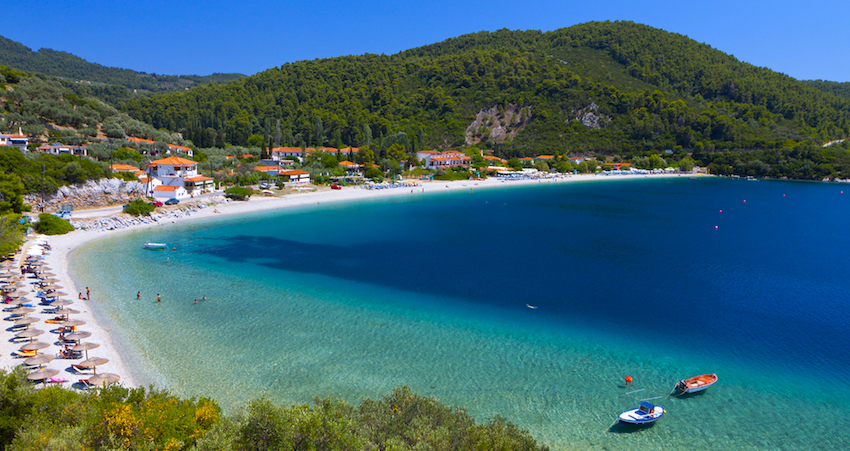Why Vitamin D is Low? Facts About Vitamin D
Why Vitamin D is Low
Why it might not actually be your vitamin D.

By Travis Wade
Nutrition is complicated. People want to know why vitamin D is low. You would think that getting vitamin D would be easy peasy. You get some sun when you can, and when you can’t, just take vitamin D supplements making sure to get lots, and you’ll be fine. I wish it was that easy.
I will try to cover as much as I can about vitamin D in this article, but there’s a lot to it. First, if you haven’t consulted a nutritionist and you are taking supplemental vitamin D, you are likely doing more harm than good. My recommendation is to stop taking it immediately. Here is why.
What is Vitamin D
Vitamin D is a hormone our bodies create. Like other hormones, cholesterol is the precursor to vitamin D. Also, there’s a storage and active form of the hormone. Cholesterol under our skin turns to cholecalciferol with sunlight. Our liver will convert cholecalciferol to calcidiol (or 25-hydroxyvitamin D). Calcidiol is the storage form of the hormone, and the one doctors will test for. Calcidiol gets converted to calcitriol (1,25 dihydroxyvitamin D) in our kidneys, which is the active form of the hormone. Keep in mind that each one of these conversions uses up magnesium.
High Vitamin D Causes Low Magnesium
Magnesium is the top mineral deficiency and the fourth leading deficiency overall. It’s the first mineral to get used up when we are stressed. Also, magnesium has a lot of competition to be absorbed and used by the body from other minerals, and from a ridiculous amount of toxins. You are very likely already deficient in magnesium.
Our adrenalin glands rely on the ratio of sodium to magnesium. When too much vitamin D depletes your magnesium, your adrenal glands will not be able to function correctly.
High Vitamin D Causes Low Potassium
Vitamin D excretes our potassium. It’s called renal potassium wasting. Potassium also has a lot of competition for receptor sites. Its biggest competitor for receptor sites is thallium, which is in car exhaust. It’s also extremely challenging to get enough potassium in your diet.
Inasmuch, the thyroid gland relies on the ratio of calcium to potassium. When too much vitamin D increases your calcium and decreases your potassium, it slows the thyroid causing hypothyroidism. A few symptoms of low-potassium are constipation, heart dysrhythmias, slow metabolism, and anxiety.
High Vitamin D Causes High Calcium
Vitamin D affects over 200 genes, which means it has many jobs. The number one job vitamin D does is it allows for the absorption of calcium. There are two types of people: those that don’t care about their health, they are lacking vitamin D, and, therefore, lacking calcium. Those that care about their health are taking vitamin D and most likely have low potassium, low magnesium, and high calcium—none of the above works.
Too much vitamin D turns us into a calcified mess. We get stiff muscles, anxiety, arrhythmias, high blood pressure, kidney/gallbladder stones, increased stress, and slow metabolism. Instead of preventing the most common diseases in our society, too much vitamin D will increase cardiovascular disease and the chances of a heart attack or stroke.
Food Sources Of Vitamin D

I did an analysis test, and I got my results back. The person helping me with my analysis is a toxin expert but also a nutritionist. Her recommendation was not to take vitamin D and get vitamin D from the sun and from the food we eat like the SMASH diet: sardines, mackerel, anchovies, salmon, and Herring.
Just as vitamin D allows for the absorption of calcium, vitamin A provides for the intake of potassium. I asked my nutritionist about the ratio of vitamin A to vitamin D we need, and the answer is unknown. When I think about it, it will be different for everyone and different at different times for everyone. My nutritionist’s advice was to get the amount/ratio that is in food.
While I am at it, vitamin E allows for the absorption of magnesium and vitamin K provides for the intake of sodium.
Get Vitamin D From the Sun

Sunlight is perfect because the UVB light gives us vitamin D, and if we get too much, the UVA will destroy the excess vitamin D. Scientists looked at fair-skinned people in Hawaii to see how high they could get vitamin D levels with sunlight. People tend to top out at about 150 mmol/ml or 60 ng/L. You don’t ever want to drop below 20 ng/L.
Sunlight is also great because it detoxifies the body. One way is the sulphur it creates eliminates toxins, and another way is infrared light helps to eliminate toxins. Fewer toxins also reduces inflammation in the body and reduces your risk of any disease.
Sunlight also prevents cardiovascular disease by providing nitrous oxide (NO). NO is a vasodilator, and it gets stored in the wall of our vasculature. We can release it with a little exercise. If you are sitting for a while, get up and do a bit of a full-body workout.
Sunscreen

As an EMT, I have dealt with adverse reactions to sunscreen. One of the problems with sunscreens is they are full of toxic chemicals that get absorbed into our skin. Another problem is that they aren’t regulated. A patient I was dealing with had used the same sunscreen before, but one bottle isn’t the same as the next, so he reacted and didn’t know why. The SPF on the label is not regulated either, so that’s inaccurate as well.
Most sunscreens are carcinogenic because of the chemicals and because they are unreliable. Getting a sunburn is also carcinogenic. The best way to avoid getting a sunburn is to get sunlight consistently, and the earlier in the day, the better. This will give us a good base tan and decreases our chances of burning. The darker the skin, the less UVB/UVA rays we absorb.
At around two till four in the afternoon, it’s siesta time. The sun will be the hottest and breaking the atmosphere more directly at that time, and that’s when people will burn. If you can’t get out of the sun at this time and you need a sunscreen, then you can use zinc oxide. Don’t take zinc oxide orally as a supplement. It’s not bioavailable, which means the gut won’t absorb it into the body. Neither will our skin; the molecule is too large. It works as a sunscreen though, and it’s not toxic.
Vitamin D From Light Therapy

I was looking into how to get vitamin D from light instead of a supplement a couple of years ago. One article that I read talked about Edmonton, AB, Canada in particular because we are so far north. It said we don’t get UVB rays in Edmonton from October to April. The UVB rays get deflected off the atmosphere during those months, and we won’t get vitamin D.
When I looked into light therapy, I found lamps that give us UVB rays, but they were $1200. You buy a bunch of them and set them around you and have them shining on you from all sides. That’s way too expensive! I thought I would just get a turtle lamp. One of those lamps that lizards or turtles have shining on them to provide UVB rays, and they are only $50. The problem was how much UVB light do I need?
To this day I am undecided about UVB light therapy. I have talked to many experts that say to avoid UV light therapy due to the carcinogen effects and I have heard many say to use it. If I ever find a UVB light therapy lamp that comes with instructions on proper use to avoid cancer, and it doesn’t cost $1200, I will use it. In the mean time, in the winter months I use supplemental vitamin D twice a week and try to get as much vitamin D as I can from my diet.
One of the only supplements I recommend is fermented cod liver oil. Fermented cod liver oil will have probiotics, vitamin A, vitamin D, vitamin K2, and Omega 3s. The amount in each capsule is unknown as this is a whole food and not made in a lab with specific amounts of each.
Sulphated Vitamin D
When literature talks about vitamin D, they might be talking about the cholesterol form (cholecalciferol), the storage form (calcidiol), or the active form (calcitriol). So an article might say here are the benefits of vitamin D… they might be talking about the kind that comes from the sun; the sulphated form. A vitamin D supplement is not sulphated and doesn’t have many of the health benefits the sun offers.
One of the cool things about sulphated cholesterol is that it is water-soluble and doesn’t need to be packaged up by LDL to be transported around. Usually, the liver will produce LDL, which facilitates the movement of fats and cholesterol around the blood. When the sun sulphates cholesterol, it lowers LDL levels.
Dr. Stephanie Seneff found evidence that LDL or “bad cholesterol” was our body’s protective mechanism to avoid a heart attack. Doctors always saw LDL go up before a heart attack, so they concluded it was a cause. Dr. Stephanie Seneff claims that sugar will gum up LDL, and sugar is a problem.
I have mentioned it before, and Dr. Stephanie says it too, but cholesterol is a vital nutrient. It is one of the building blocks of our bodies. Our body can create some cholesterol in the liver with the right raw materials, but it’s a challenging process. Therefore, help from food sources is critical. Eggs, fatty cuts of meat, coconut oil, and grass-fed butter are excellent sources.
Dr. Stephanie Seneff
Here is a transcript of Dr. Mercola’s interview with Dr. Stephanie Seneff.
Dr. Stephanie Seneff is a senior scientist at MIT, and she did thirty years of research on sulphur. I have to talk about sulphur because the benefits may be confused with vitamin D. Dr. Seneff says that it might be the sulphur that has a lot of the health benefits that vitamin D is credited for. Then again, one form of vitamin D is sulphated cholesterol or cholecalciferol.
The problem Dr. Seneff has, which is our problem as well, is sulphur isn’t on anyone’s radar as a nutrient we need. You can’t find daily requirements because it’s never been studied or looked at as a nutrient. Thank you, Dr. Stephanie, for putting in all that time researching sulphur because here are the possible health benefits.
I want to start with this study about us Canadians. Some awesome people discovered that if Canadians increased their vitamin D to a healthy amount, we would have approximately 37,000 fewer deaths per year. That’s 16.1% of annual deaths in Canada. Death prevention is a pretty awesome benefit, I’d say.
Another advantage is disease prevention. Cancer is one of those diseases. Sulphur (or vitamin D) also strengthens your immune system and protects you from cardiovascular disease. Sulphur is also in your neurons and protects you from depression.
I think it’s important to reiterate that sulphur may prevent the most common diseases in our society. These diseases being cancer, cardiovascular disease, high blood pressure, heart attack, and stroke. Dr. Seneff says the correlation between sunlight and cardiovascular disease is a straight line.
Dr. Seneff mentions the Mediterranean diet and how it has gained popularity. She says a Mediterranean diet only works in the Mediterranean because of the soil. She says there is a lot of sulphur there. Now might be a good time to mention she is not a fan of a vegetarian diet because there isn’t enough sulphur in it.
The Greek Islands Example

The photo was taken from https://www.greecetravel.com/crete/

The photo was taken from https://www.greektravel.com/greekislands/skopelos/
There are two islands not far from each other in Greece. One is called Skopelos, and the other is called Crete. Crete is the largest island in Greece and is made from basalt. Basalt is a volcanic rock and full of sulphur. Skopelos, on the other hand, is made of limestone. Can you guess which one has less heart disease? They have similar people, climate, and diet. Skopelos has five times the risk of heart disease compared to Crete.
A couple more diseases that may be prevented with adequate sulphur might be multiple sclerosis and arthritis. Dr. Seneff says people with a sulphur deficiency may steal sulphur where their genetics say to. Sometimes it might be from cartilage, and maybe it’ll be from the myelin sheath of neurons.
Dr. Seneff says she was talking to a scientist doing a study on multiple sclerosis. The doctor had interviewed those with multiple sclerosis and found that everyone he spoke to was not breastfed. Guess what’s in breast milk. Raw milk (non-pasteurization) is the only food source known that has sulphated vitamin D in it.
Sources of Sulphur

Sunlight! Meat, eggs, seafood, and Epsom salt bath. Dr. Seneff and I both do an Epsom salt bath at least twice a week. I was doing it for the increased magnesium. Dr. Seneff was doing it for the increased sulphur. I am now doing it for both. Epsom salt is magnesium sulphate. Both are easily absorbed through the skin, and both are very much needed.
Want To Get Started On A New Lifstyle Right Away?
Or
Would You Like A Plan To Achieve Your Fitness Goals?
Sign Up For Online Personal Training!


